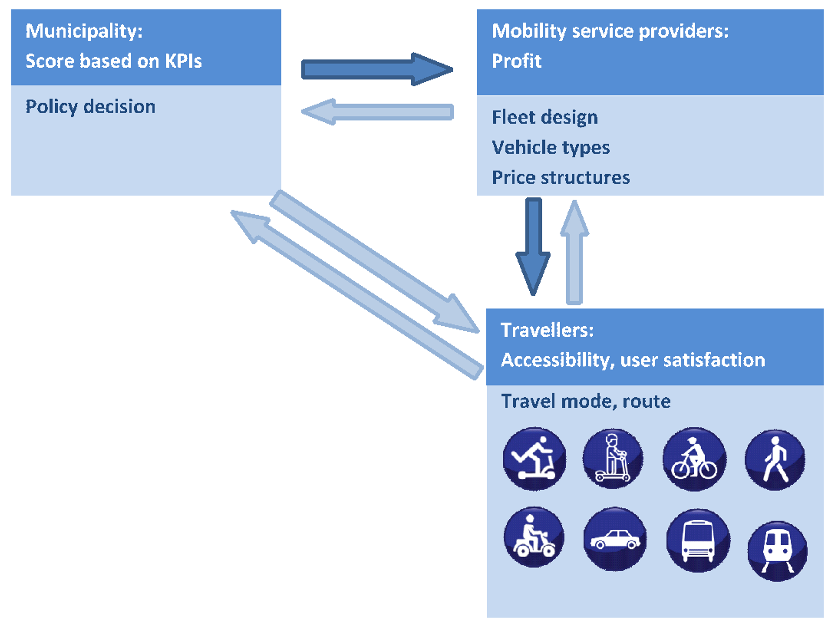Deliverable 2.3’s main objective is to propose a series of variables, KPIs and requirements on data for each of the nuMIDAS’ use cases. The performance indicators were selected in compliance with the recommendations of OECD and United Nations for Smart Sustainable Cities. They were selected to capture three dimensions, namely Economy, Environment and Society, and allow a municipality to reach a balance among them.
We consider a mobility ecosystem as a complex system, which is a subsystem of a city, another complex system in the sense of systems theory. Each use case involves different actors with competing interests – but also cooperating to a certain extent, contributing to the common value-in-use (see Deliverable 2.1 where business model radars for various transportation services were discussed). Thus, actors behave as players in a Stackelberg game in the sense of game theory used as the searched common framework. In this game, the municipality is a single leader and travellers or also mobility service providers are followers. The leader moves first and makes a decision on a certain policy, as for example a parking policy. The aim of the municipality is to maximise social welfare expressed as a score based on selected and/or aggregated key performance indicators. As soon as the rules are given, a simultaneous game between followers proceeds, in which each of them searches a best reply to the action of the leader and also to the action of other followers.
The following example is related to decisions on policies related to shared mobility. Here the municipality (as the leader) selects a strategy by setting rules and conditions for shared mobility (the number of released vehicle licences and other conditions). Its payoff is represented by a score based on KPIs, which is to be maximised. Followers include mobility service providers deciding on fleet design, vehicle types, price structures etc. to maximise their profit, and travellers who select a travel mode. Their payoff can be expressed, e.g., by accessibility (economic, operational and physical). Relations between players are depicted in the graph above.
As the payoff function for the municipality, we proposed a score computed in the sense of Nash welfare function as a weighted geometric mean of normalised performance indexes corresponding to different aspects, j, such as environmental, economic and social, and different interests, i, of each player totalling m interests.

The present version of the Deliverable 2.3 represents the first report on the mentioned findings. The concepts and indicators are being developed further together with the work on individual use cases. The final version will be published together with the Second report on the formulation, evaluation, and prototyping of the advanced methods and tools (Deliverable 3.3).





